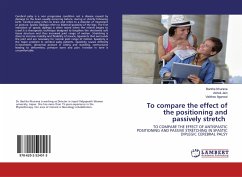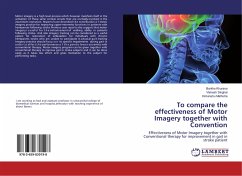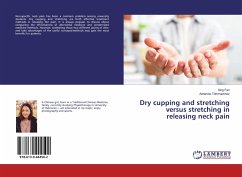
To compare the effect of the positioning and passively stretch
TO COMPARE THE EFFECT OF ANTISPASTIC POSITIONING AND PASSIVE STRETCHING IN SPASTIC DIPLEGIC CEREBRAL PALSY
Versandkostenfrei!
Versandfertig in 6-10 Tagen
27,99 €
inkl. MwSt.

PAYBACK Punkte
14 °P sammeln!
Cerebral palsy is a non progressive condition not a disease caused by damage to the brain usually occurring before, during or shortly following birth. Cerebral palsy refers to brain and refers to a disorder of movement or posture. Spastic diplegia refers to bilateral spasticity of the legs. The first indication of spastic diplegia is often noted when the infants begins to crawl.It is therapeutic technique designed to lengthen the shortened soft tissue structure and thus increased joint range of motion. Stretching is done to increase mobility and flexibility of muscle, ligaments that surrounds ...
Cerebral palsy is a non progressive condition not a disease caused by damage to the brain usually occurring before, during or shortly following birth. Cerebral palsy refers to brain and refers to a disorder of movement or posture. Spastic diplegia refers to bilateral spasticity of the legs. The first indication of spastic diplegia is often noted when the infants begins to crawl.It is therapeutic technique designed to lengthen the shortened soft tissue structure and thus increased joint range of motion. Stretching is done to increase mobility and flexibility of muscle, ligaments that surrounds the joint and are necessary for normal joint range of motion. Spasticity is the major problem in cerebral palsy patients. Spasticity causes difficulty in movement, abnormal posture in sitting and standing, contractures leading to deformities, pressure sores and pain. Increase in tone is uncomfortable.












